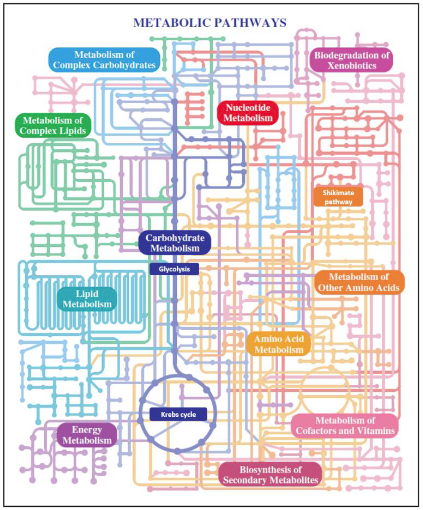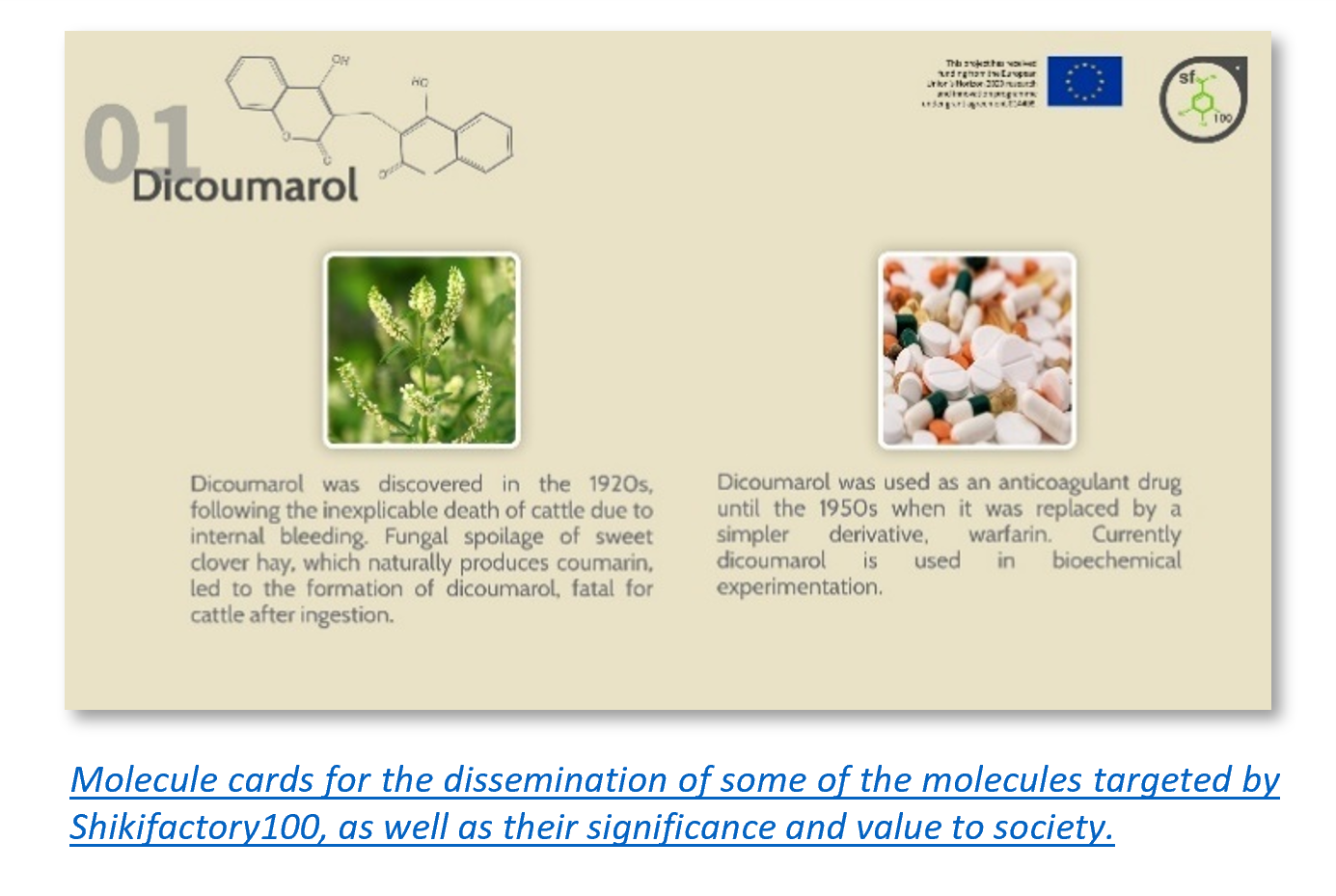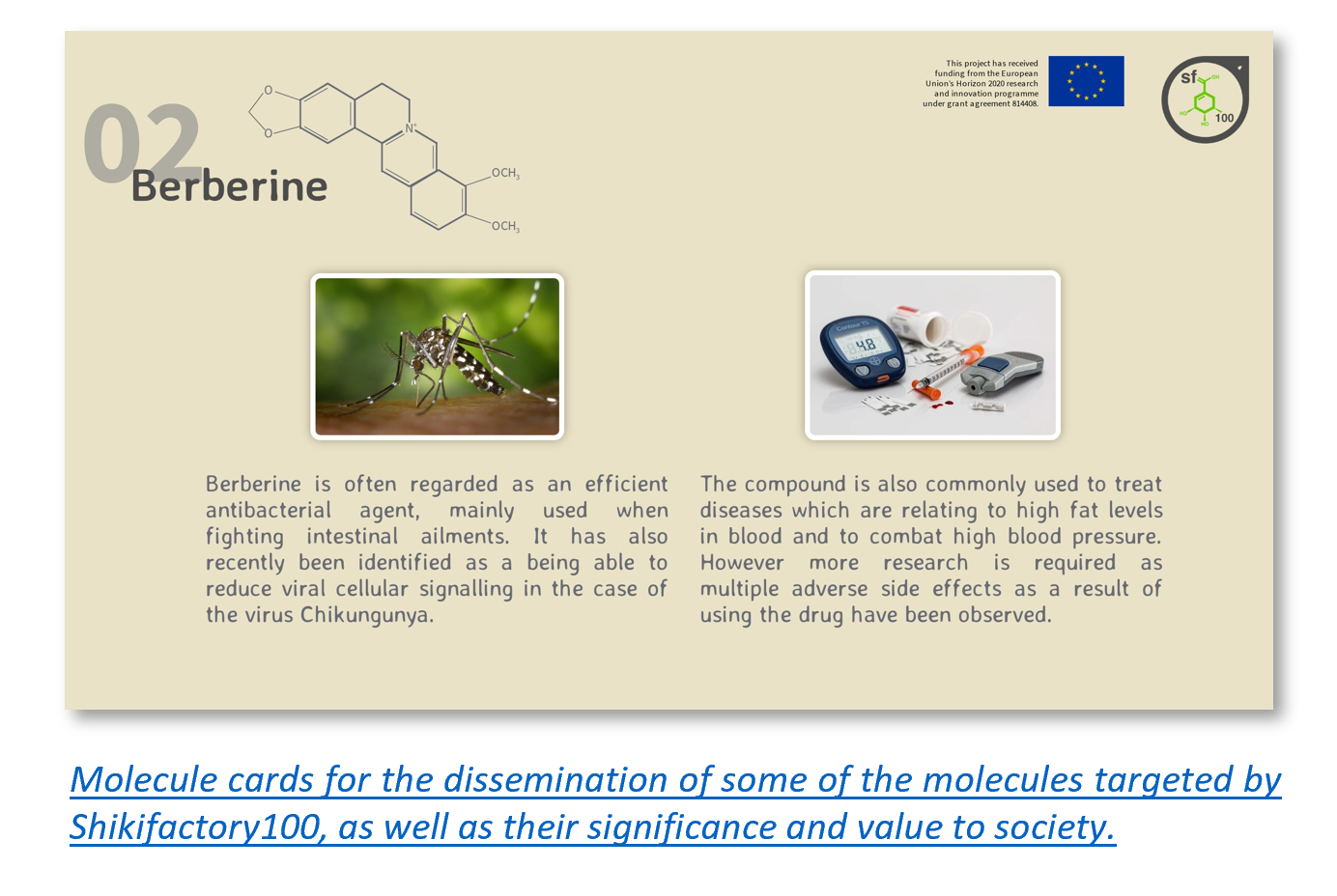
The SHIKIFACTORY100 project aims towards the production of a universe of more than 100 high-added value compounds from the shikimate pathway, a hub in cell metabolism, through the development of an optimized shikimate chassis (based in 3 sub-hubs: Phe, Trp and Tyr) and the proposal and implementation of novel biosynthetic routes exploring enzyme promiscuity to introduce new pathways for the production of known and newly designed compounds.
Cell metabolism includes hundreds of crosslinked metabolic pathways, such as glycolysis, the Krebs cycle and the shikimate route. The latter allows organisms to synthesise aromatic amino acids, which play key roles in the metabolism of these organisms, including protein formation, regulation or catalysis. These molecules are not only important for metabolic purposes, but also industrially as they are used in the commercial preparation of food, pharma and chemical compounds. Nevertheless, current industrial production methods (chemical synthesis and extraction from biomass) present several challenges. This has created an interest in alternative production routes, such as microbial production, where living organisms such as bacteria and yeast are used for the production of the target compounds. A comprehensive article about the Shikimate Pathway is available here.
Project Video
The aim of the Shikifactory100 project is to use world-leading synthetic biology tools for the microbial production of 100 molecules derived from the shikimate pathway, with applications in food, pharma and cosmetics, using bacteria and yeasts as host organisms.
The partners have developed a short video explaining the scope of the project in more details. This video is accessible on YouTube via the following link and can also be accompanied by English, Spanish and Portuguese subtitles.
100 Compounds


The project focuses on aromatic compounds obtained from the shikimate hub, as these are an important class of chemicals that are used as organic solvents, dyes, foods, flavours and fragrances pharmaceuticals, polymers, etc. – representing currently a multi-billion value pool in these market segments. The individual markets of many of the compounds in the Shikifactory100 project exceed 100 million dollars or even 1 billion, with some of the aromatic amino acids exhibiting growth rates exceeding 10% CAGR per year.
We have chosen a few key compounds from our list of targeted compounds and made “Molecule Cards” highlighting their significance and their value to society. Our first card focused on Dicoumarol, a compound first discovered as being the cause of cattle disease, which went on to become used as a medicinal substance.
If you would like to see more of our Molecule Cards, you can find them all stored in the Communication Material section of the ShikiFactory100 website.
To read the whole release, you may click here.
Author
Dr Andrea Muñoz Garcia,
Source
Shikifactory100, project, 2021-11.
Supplier
c-LEcta GmbH
DSM
Ecole Polytechnique Fédérale de Lausanne (EPFL)
European Commission
NNFCC
SilicoLife
Technical University of Denmark – DTU
University of Manchester
University of Minho (UMINHO)
Share
Renewable Carbon News – Daily Newsletter
Subscribe to our daily email newsletter – the world's leading newsletter on renewable materials and chemicals










